The Brooklands Double 12 brought out fine examples of motoring art from Italy and specifically from Alfa Romeo. The Italians have created some of the most beautiful cars ever to turn a wheel, occasionally a dog too.
Almost the first car that the Special Correspondent and I tripped over on our arrival was this fabulous machine. It was a Alfa Romeo 6C 2500 SS Bertone dating from 1942.
It was brought to England by its current owner, Corrado Lopresto, who has restored the car to its original glory.
Along the way it has won awards at Pebble Beach and Villa d’Este, including the 2011 Coppa d’Oro, it doesn’t get any better than that.
According to my good friend Wouter Melissen the design was the work of Mario Revelli di Beaumont.
You can read up more about this fantastic car on Wouter’s excellent site HERE . Strange thing, probably a coincidence, but when you Google this car, most of the websites that describe it at Villa d’Este or Brooklands use a remarkably similar wording to that of UltimateCarPage, when it talked about the car a year ago at Pebble Beach. Spooky, this internet thing.
One thing that struck me is the question of how did this car get built at all? In 1942 World War Two was in full flow, Italy was fighting alongside Nazi Germany in the Western Desert and on the Russian Front. All materials were rationed and there was strict control of industrial activity. It must have been very powerful JuJu that allowed the war effort to be diverted to build this one off. Perhaps the Italians have always had a better sense of what is important and what is not, most of them would have seen through Mussolini’s bombast by that time. Certainly nothing like this could have been built in war time Britain, the Man from The Ministry would never have allowed it.
The car was built in 1942, delivered to Concessionaria Oreste Peverelli in Como, then rescued from Italy to Switzerland to remain intact during the Allies’ invasion of Italy. It is a thing of beauty and we were lucky to see it at Brooklands.
Less exotic but still very worthwhile was this Alfa Romeo Montreal.
The styling say 1970’s in the same way as the Bertone classic says 30’s. Yet this does not detract from it, there really was Life on Mars.
Another exhibit that purported to date from the 30’s was this weird creation.
It is described as a secret project commissioned by Vittorio Jano.
Someone has taken a lot of time and trouble to post up a full history on Wikipedia.
In 1935, Vittorio Jano, working with the brothers Gino and Oscar Jankovitz, created a one-off mid-engine prototype on a 6C 2300 chassis (no. 700316),which Jano had shipped to Fiume, Croatia in 1934. The brothers Jankovitz had been close friends with leading Hungarian aerodynamicist Paul Jaray, and the prototype, called the Alfa Romeo Aerodinamica Spider, was an especially early and clear example of ponton styling — a genre that would overtake automobile styling and last until the 1960s. Jano had intended to fit a V12 engine, though that possibility disappeared when Jano himself was fired from Alfa in 1937.
Based on documents kept in the family Jankovits the history of the car’s development is as follows:
Summary of the “Aerospider” Alfa Romeo Jankovits – 6 C 2300 Aerodinamica Spider “Aerospider” (constructed 1934-1937)
The prototype of modern automobile design and the first car which had been constructed and executed as a sculptural whole.
The combination of a very advanced aerodynamic body with the engine behind the central driver’s seat, on the most advanced chassis of its time makes this Alfa Romeo unique in the history of automobiles.
This special version of an Alfa Romeo 6C 2300 belonged to a secret project by Vittorio Jano and the brothers Jankovits.
The Aerospider represents:
The first supercar of “modern” sports car design.
The first mid-engined car with central driving position in the history of automobiles designed to keep the centre of gravity in the middle of the car – 60 years ahead of the McLaren F1
The first car designed to take account of newly developed principles of aerodynamics, to provide low-drag both externally and internally.
The article makes a whole batch of other claims about the car.
There is even a bit of James Bond, or should that be “The Spy Who Came in From the Cold” provenance attached?
The car was ‘liberated’ from East Europe in a dramatic way, according to the story.
Any public appearance of the futuristic looking Aerospider would have caused a sensation, but because of the secrecy surrounding the project, and then the onset of the war, the prototype remained hidden in the Jankovits’ garage in Fiume, and was not seen by anyone from outside the garage. On Christmas Eve 1946, Gino Jankovits drove the Aerospider at full speed under the toll-bar of the closed communist controlled border into Italy. Border guards fired volleys of shots after him, but the low, streamlined body saved Gino’s life. Only the rear tyres were destroyed by the bullets, which also caused some dents in the rear of the car’s bodywork. To get money they had to sell their car to an Anglo-American officer. Then the Alfa disappeared for about 20 years until it was rediscovered in England. In 1978 the Aerospider was recognized by the well-known Alfa Romeo historian Luigi Fusi, who had worked with Vittorio Jano at the time of the Aerospider project. He wanted to acquire the car for the Alfa Romeo Museum. The acquisition failed, but the prototype did eventually return to Italy, 30 years after its birth, to be restored at last to its original condition as a racing car.
However, Alfa Romeo is a brand that inspires loyalty and enthusiasm amongst the Alfisti to a degree seldom seen by other motor manufacturers. So when a rare beast like this appears from nowhere it will attract commentary and not everyone has accepted the authorised version.
Indeed, when I asked my colleague, the venerable Special Correspondent what he thought, he was somewhat dismissive. He backed up this opinion by later confirming that the car was not in the Alfa Romeo bible ‘Alfa Romeo Tutte le Vetture Dal 1910’ by Luigi Fusi. That confirmed it, as far as he is concerned, that this car is not an Alfa Romeo. Others have written blogs about this vehicle, one can be found HERE that eloquently puts the case for the prosecution.
Another comment that was published, “Respected antique dealer Colin Crabbe was told by Luigi Fusi of the Alfa Romeo Museum that the Jankowits car is not an Alfa Romeo, what ever the current owner seems to think, none the less it is an extremely interesting Alfa Romeo powered special, stories of the car dodging bullets to escape communist Yugoslavia are comically wide of the mark, the car and its occupants were allowed to leave the Yugoslavia with a perfectly normal travel permit, it was never designed for anything other than a straight 6, Alfa V12’s did not exist at the time the car was conceived by the Jankowits Brothers.”
Still, there are those who maintain that this story is true. The car has been exhibited at Goodwood’s Festival of Speed and, of course, Brooklands, giving some credibility to that version of events. Being less of a purist than those like the Special Correspondent, I am inclined to enjoy that car for what it is and am glad that we are able to see it today.
One car that attracts only enthusiasm is the Alfa Romeo 1900C SS Zagato Coupe. Even the rain storm that hit the event that day could not dim the glow from the car.
A fitting way to end this salute to Alfa magic on display at Brooklands last month.
John Brooks, July 2011

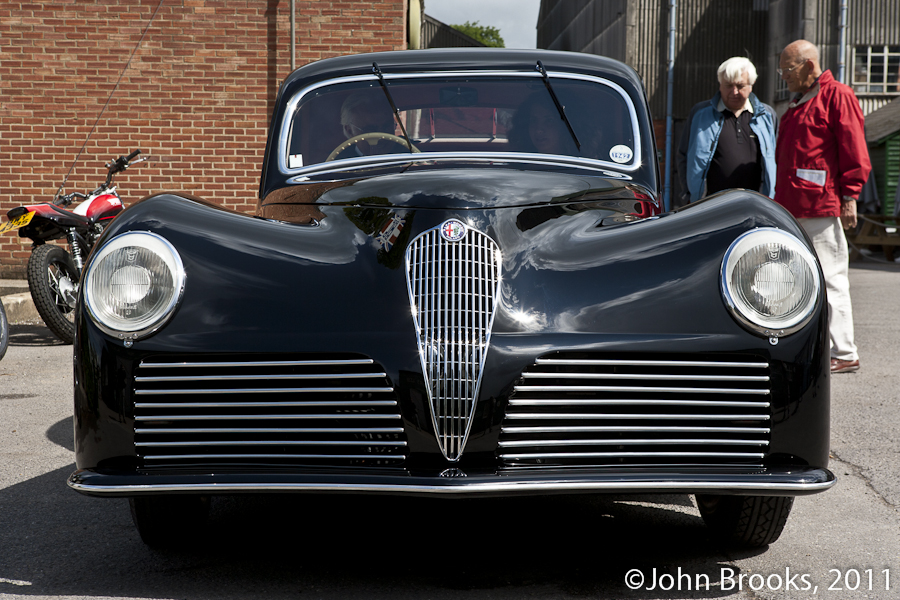
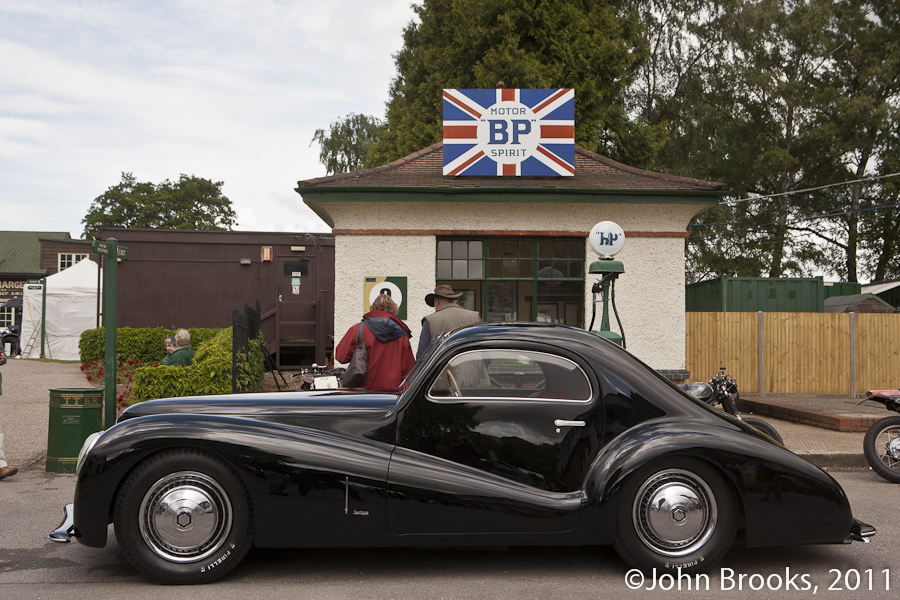
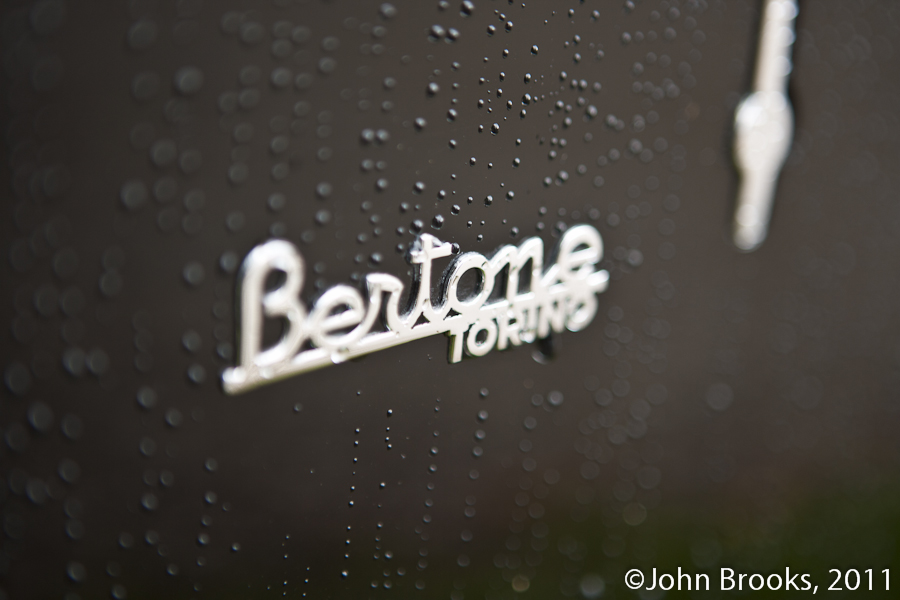
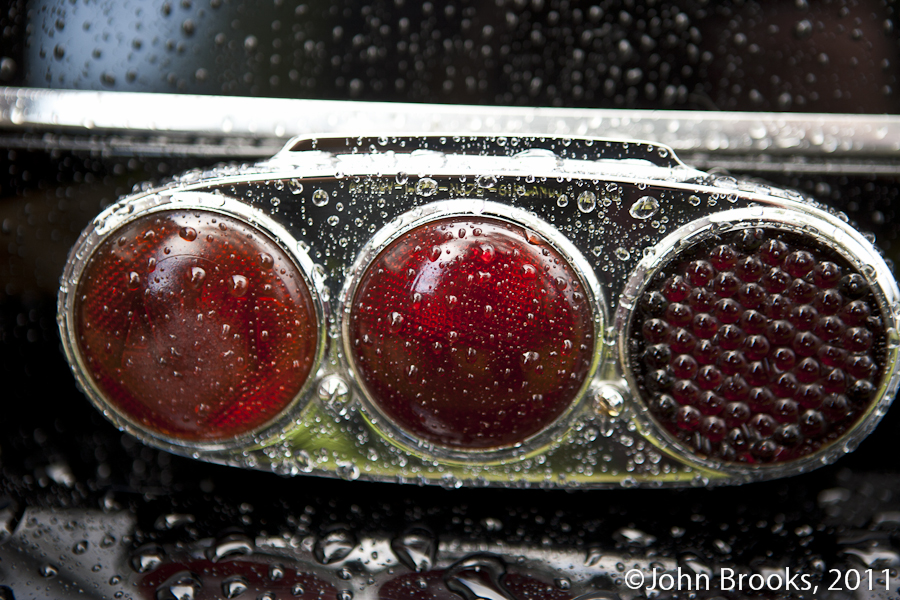
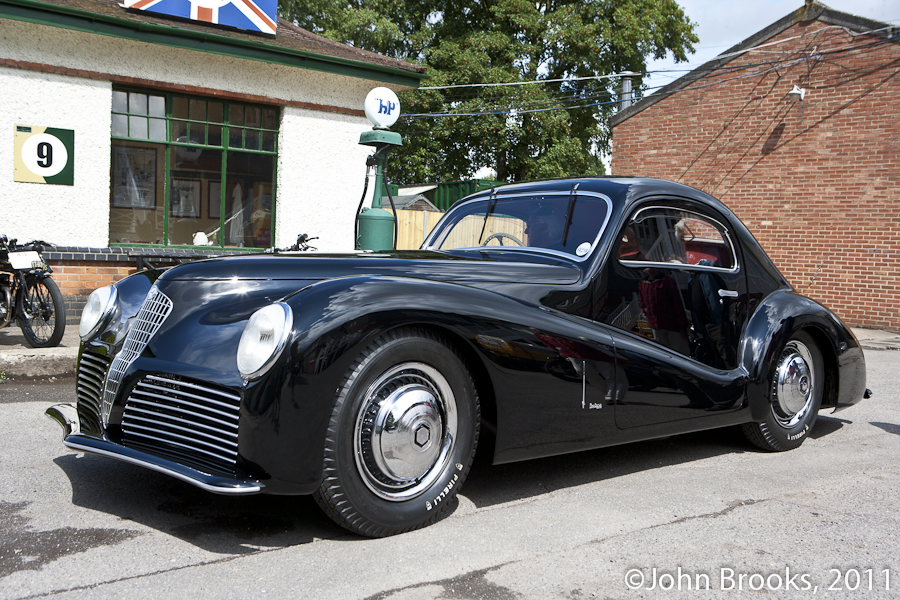
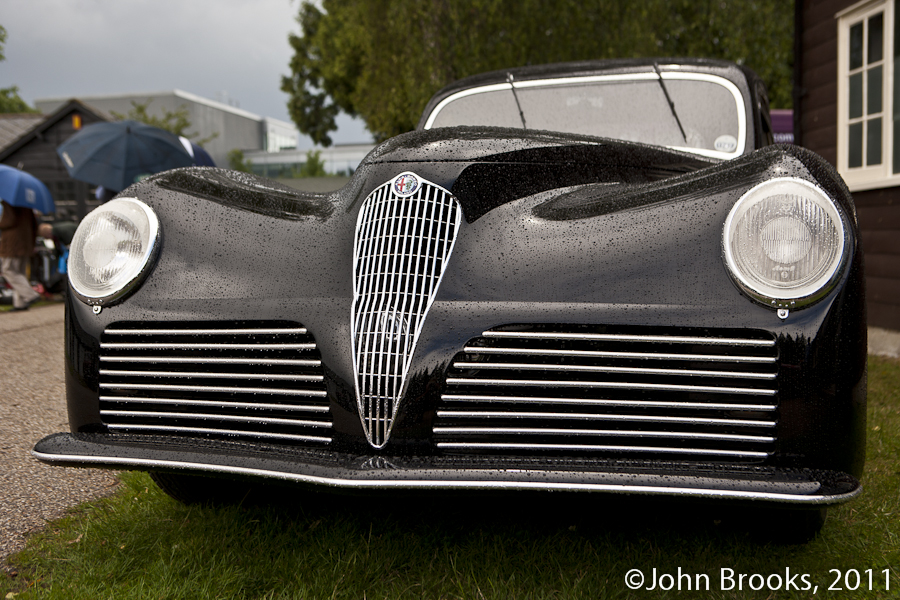
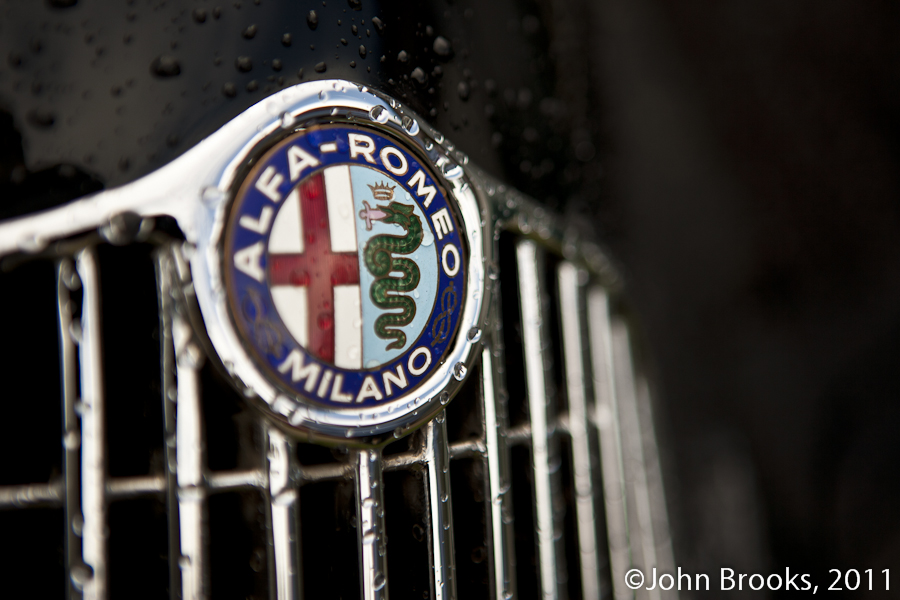
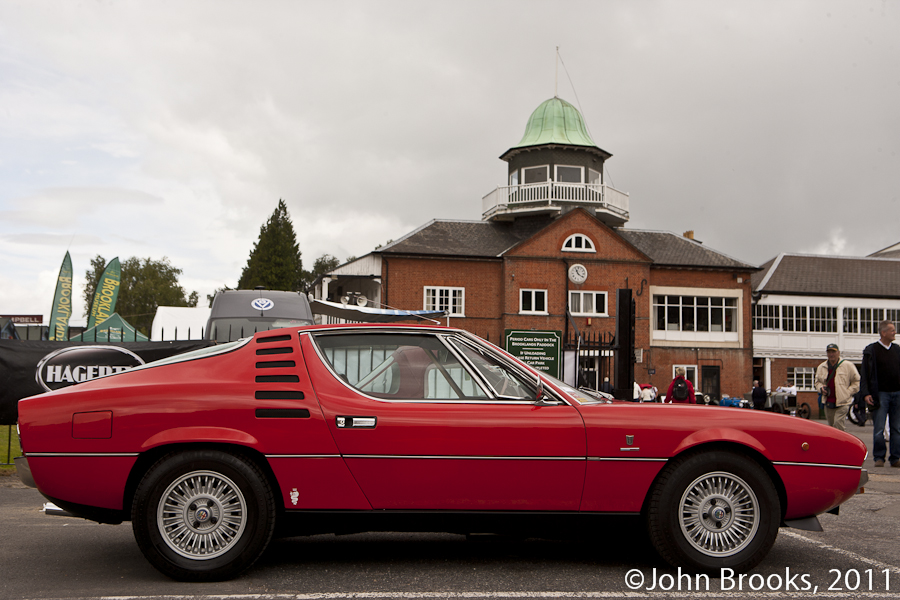
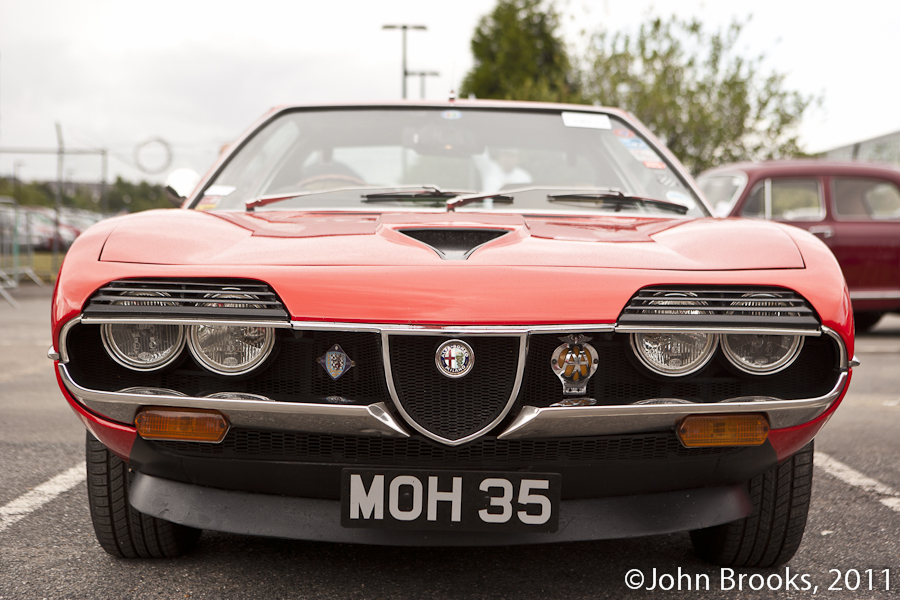
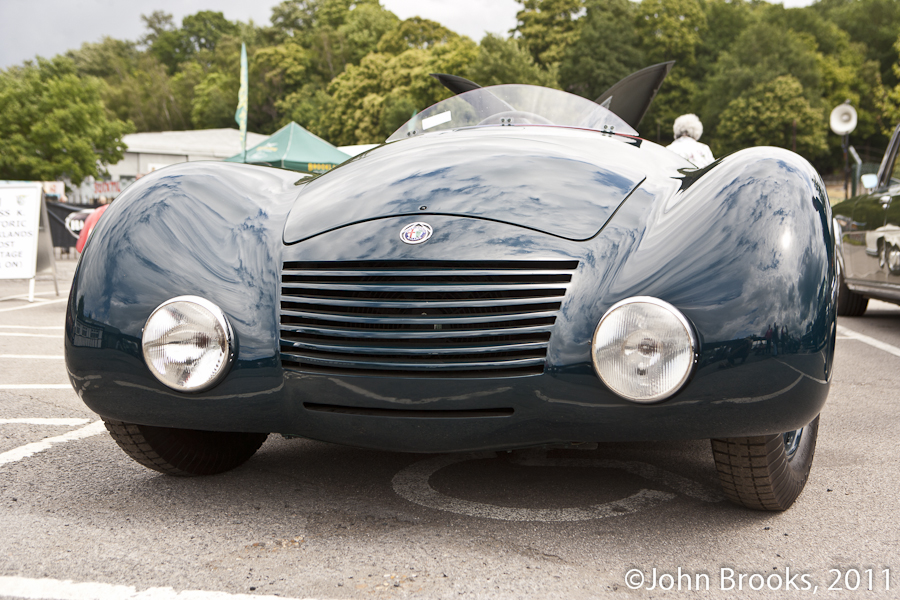
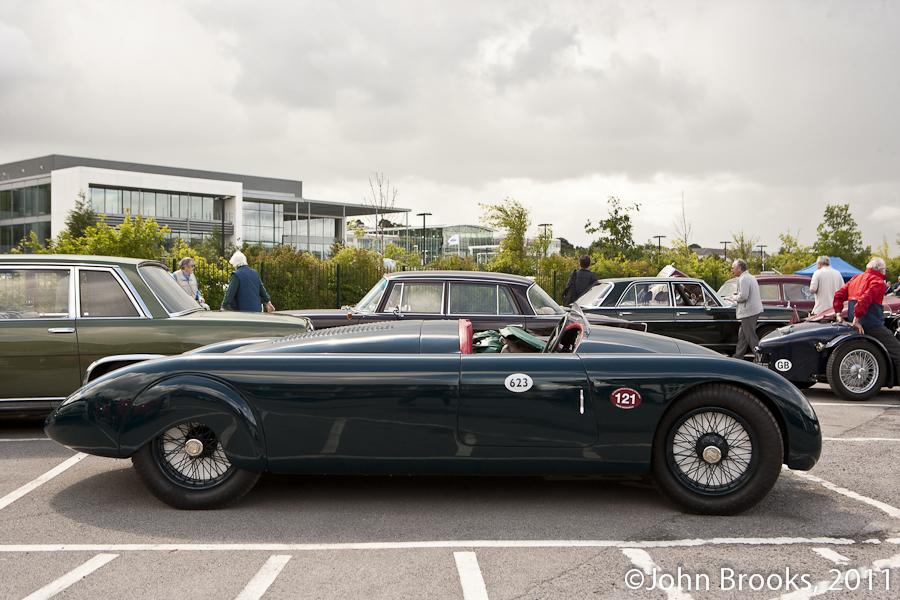
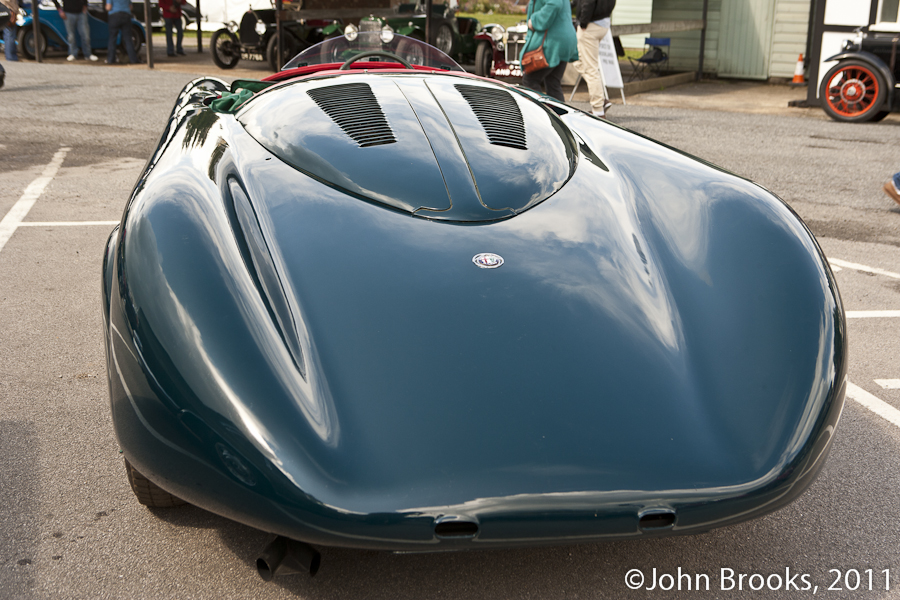
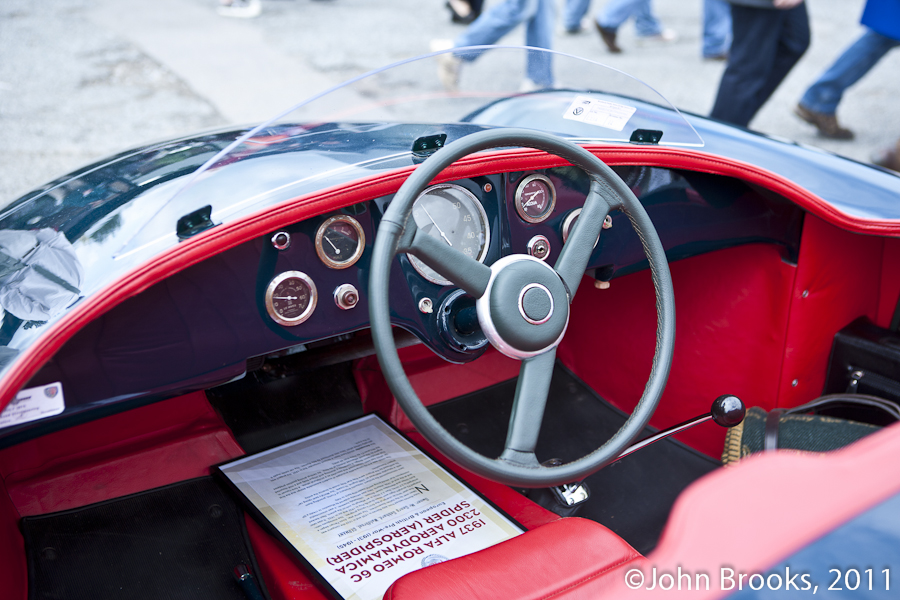
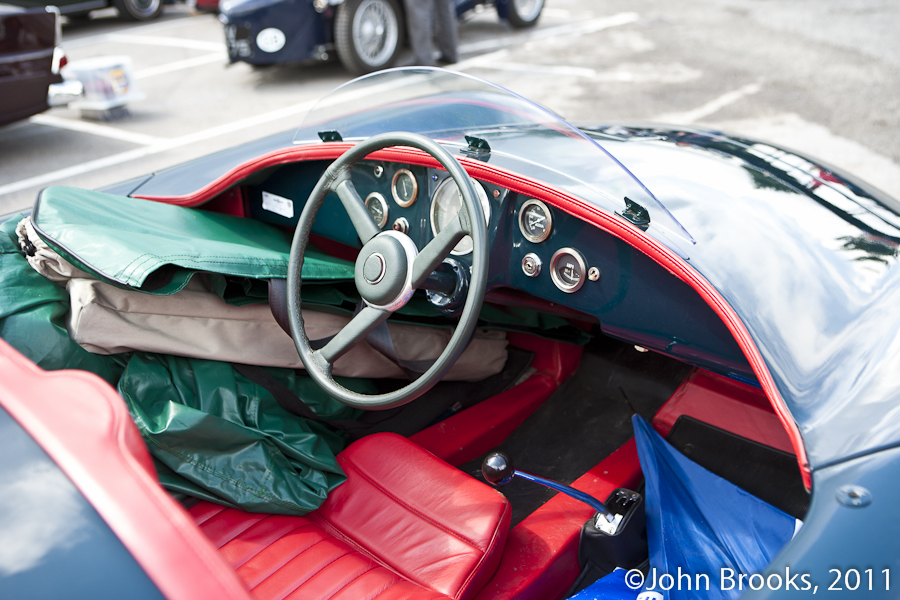
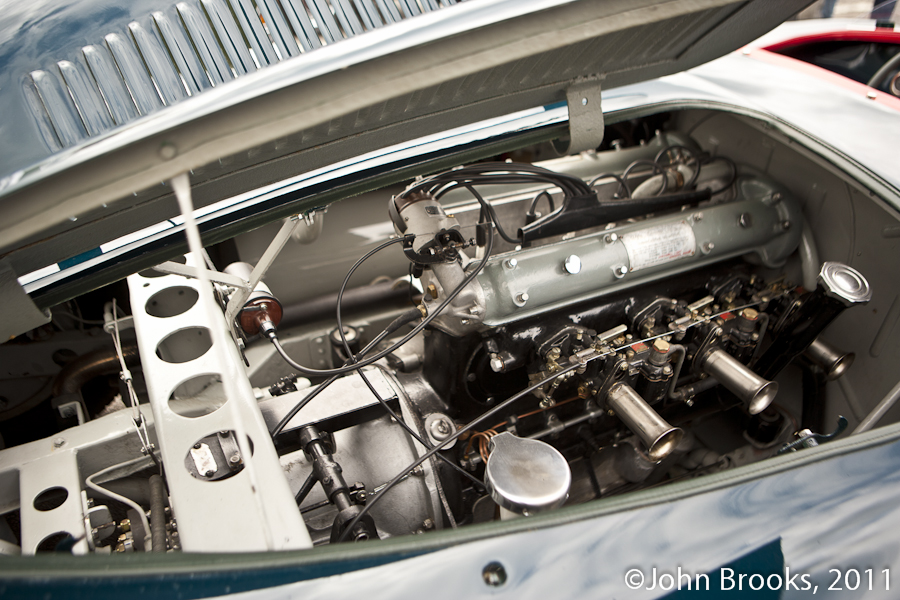
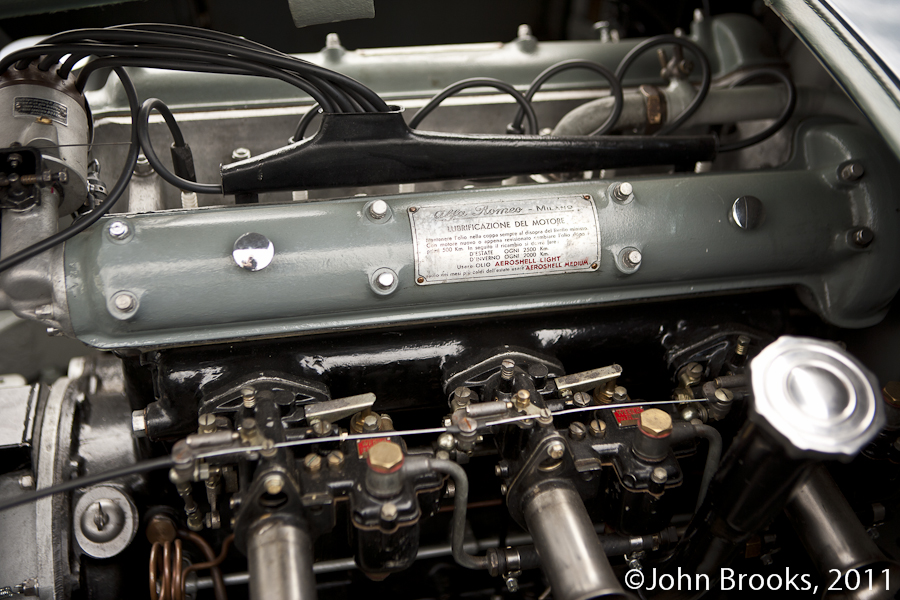
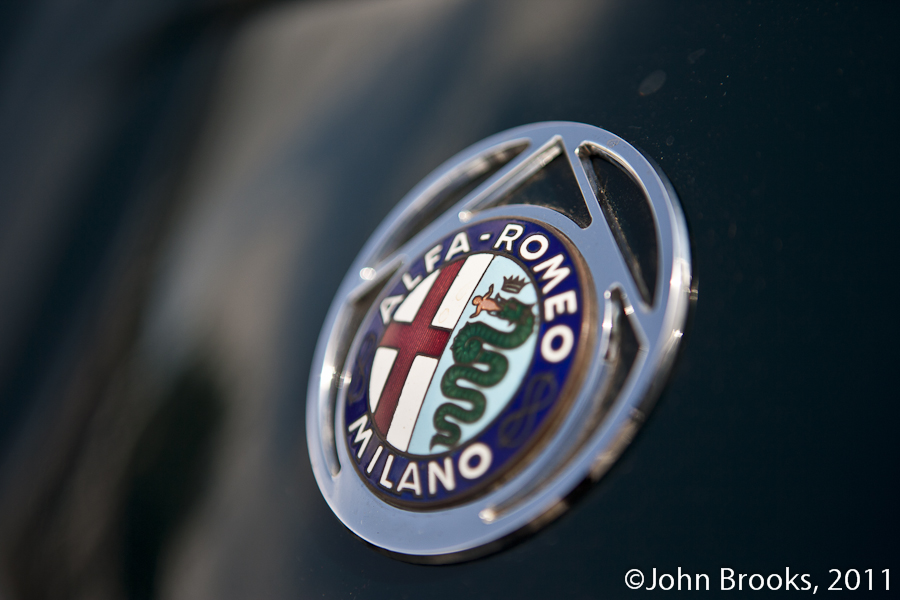
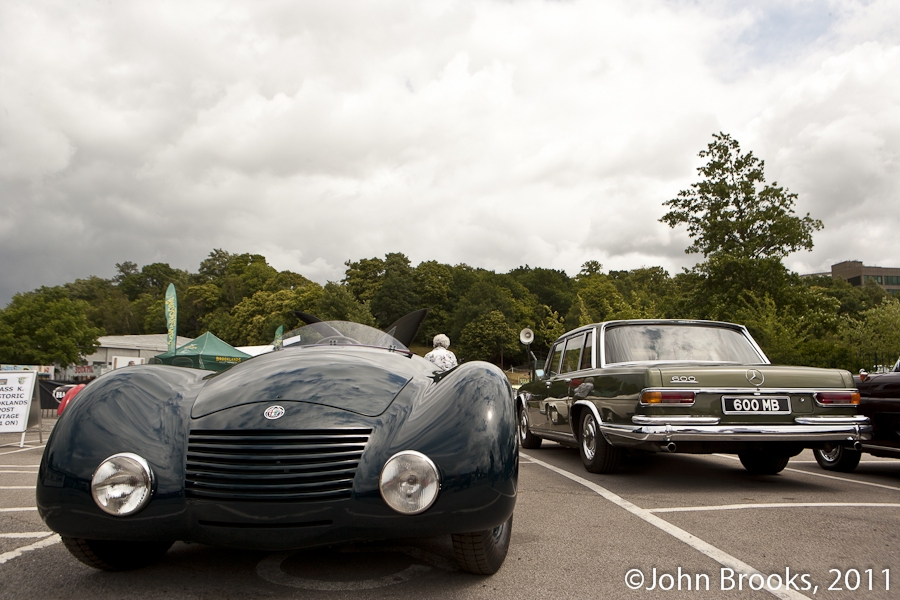
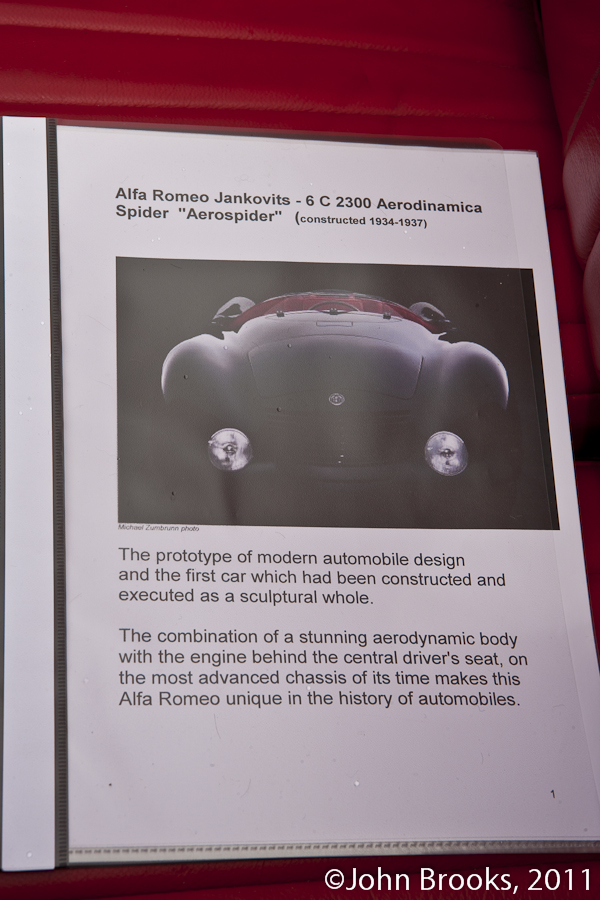
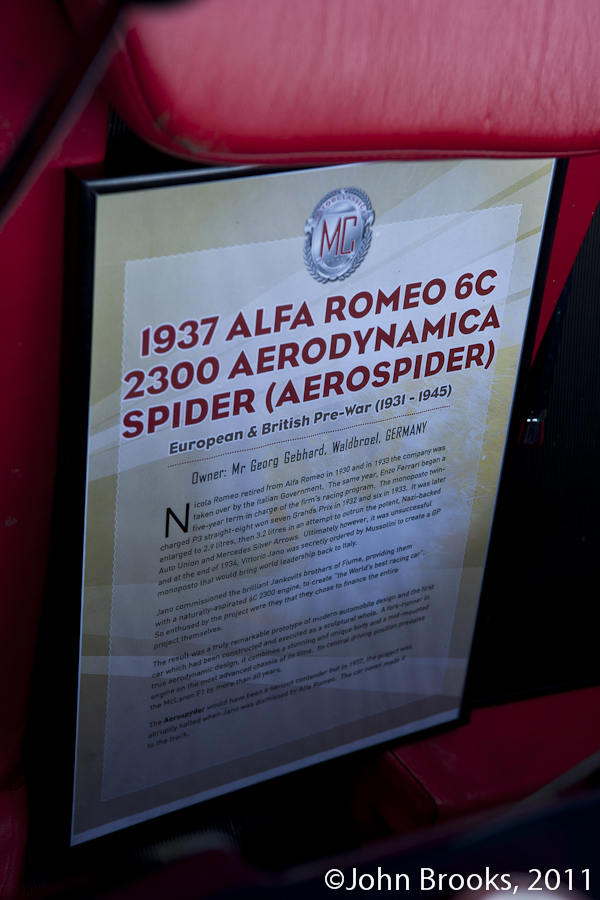
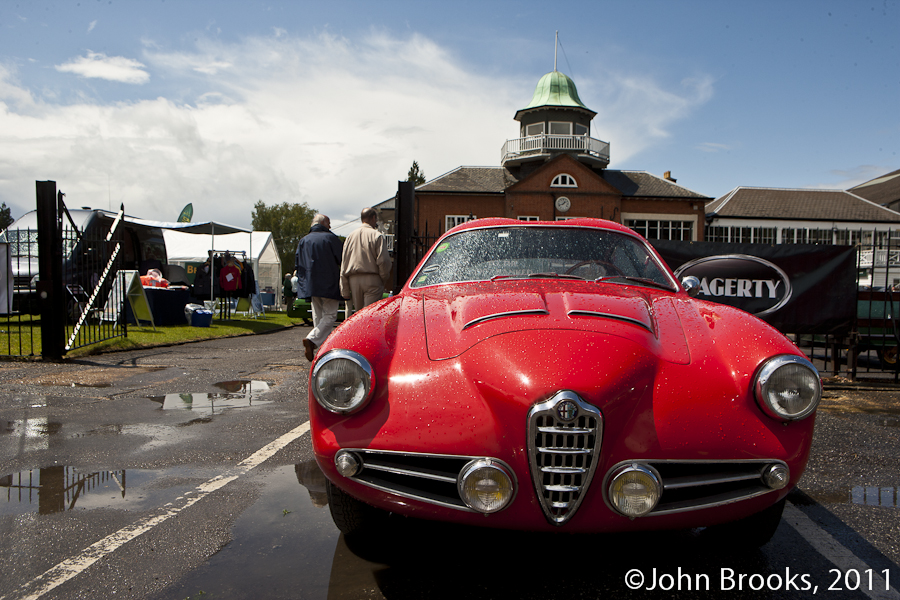
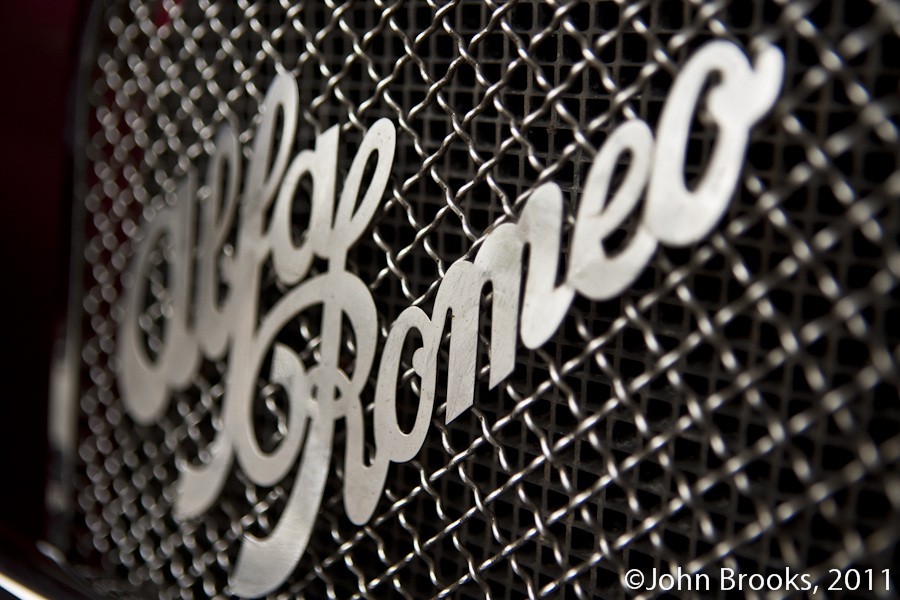
Thanks for the heads up and thanks for putting both sides of the Jankowits story, like you I enjoy the car for what it is 🙂
Art
I found this comment on the The Nostalia Forum at Autosport.com from Aldo
I think you have already seen it.
It fills in a few details.
I did some research on the Jankovits car and then I gave up to pursue other priorities.
The first conclusions are that the article by my dear friend Michele Marchianò in the October 2005 issue of Ruoteclassiche is 98% crap, as well as most of the presentation written by today German owner.
I have copies of some sketches by Gino Jankovits dated 1935: one is about brakes modified from a 1933 Buick, another one presents the front suspensions including parts modified from a Ford V8 Saloon 1935. There are also drawings of both front and rear suspensions and general layout, signed by Gino and dated 11 December 1935, and the already published in this Forum side and aerial views by Gino, again dated 1935. The engine is clearly a V6 2.300 single carb. It was actually taken from a 1935 Pescara saloon. Another sketch by Gino confirms that.
It is interesting to note that the idea of the three-seater with central driver seat was probably taken from a patent filed by Lancia in 1934: a prototype following such a layout was, I heard, actually built around 1949 with the “A10” identification.
A few photos show the car still in prototype form, without the body (in heavy steel), and fully finished in Fiume, year 1938.
Fiume was then part of the Kingdom of Italy. The licence plate reads FM 2757. FM means Fiume (today, Rijeka).
In 1946, Fiume and the adjoning territory were in a sort of “suspended” state as far as government was concerded. The whole area, including Trieste, was a buffer zone between Italy and Yugoslavia. The small territory around Trieste, and the city itself, were under the government of Allied powers (UK and USA), and were named “Zona A” (A Zone). The rest of territory, larger and today split between Slovenija and Croatia, was the “Zona B” (B Zone) and governed temporarly by the Yugoslavians.
While Zona A was reunited to Italy in 1954, Zona B became de-facto Yugoslavia much earlier. The official border treaty between Italy and Yugoslavia was signed some decades later.
The Jankovits applied for a “Licenza di Circolazione”, i.e. permit to use the car, on December 24, 1946 to the local authorities in Fiume. It looks like being the first one ever asked for the car, after the war.
The document (number 2720) has printed explanations in Italian, Croatian and Slovenian. Handwritten words are in Italian only.
The Alfa Romeo car was registered as no. R0559 (is this the chassis number?) with engine number 700316, as three-seater.
The owners are listed as “Fratelli Jancovits fu Matteo”, i.e. Brother Jankovits, sons of the deceased Matteo. The typo in the name is the document. They lived in “Fiume, via Ciotta 27”. The permit expired on December 31, 1946 and its validity was for “Istria, Litorale Sloveno e Zona A”.
It means that the Jankovits had a permit only for a week, good for driving into the A Zone, i.e. Trieste and the whole area around Fiume. Therefore, the stories about bullet dents when they “escaped” into Trieste are sheer fantasy. They drove the car with a regular cross-border permit.
Apparenly, as already written, the car went then into the US, while the Jankovits settled in Sirmione, a beautiful resort on the Garda Lake, Northern Italy, where they ran the Astoria Lido Hotel (the hotel is still there, but no more Jankovits’).
A letter by Malcom Templeton, Alfa Romeo dealer in Ballymena, Northern Ireland, to the Jankovits (dated June 5, 1981) confirms that the car is in his ownership. He reports on a letter by Mr. Luigi Fusi of the then forming Alfa Romeo Museum, who passed the information about the Jankovits as builders of the car. Mr. Templeton, apparently, didn’t know the origin and the story of the car.
I read of other owners in UK, then the car was owned for years by an Italian collector, Mr. Nazario Bacchi, living in Forlì, Emilia Romagna Region. He started the restoration of the car in Modena. Photos of the engine bay when the car was at Bacchi’s show a three-carb layout. The colour of the car appears to be light blue, not the dark green as today. The restored car was sold at the Artcurial auction on February 2004 in Paris, alas with an incomplete description of its story, still partially unknown.
Pingback: Bolognese Sauce | DoubleDeClutch.com